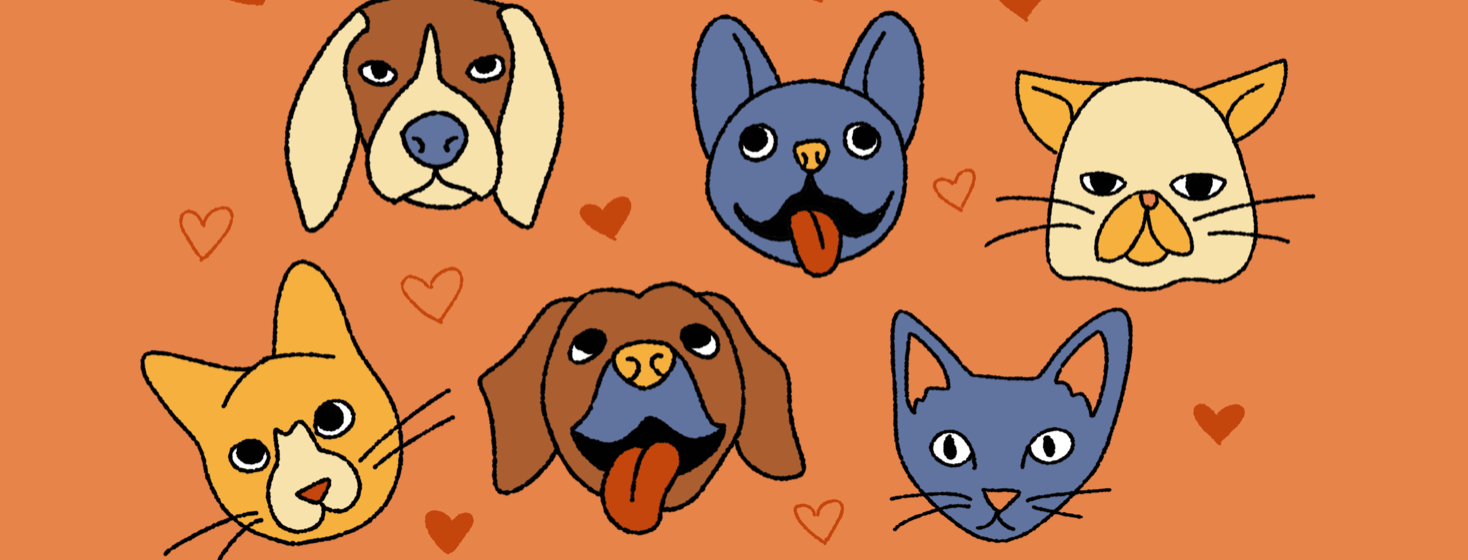Finding Support for Thyroid Eye Disease with Fuzzy Friends
I am a cat lover. How much of a cat lover? (Cut to a pile of funny cat socks and last year’s holiday cards featuring my cat in a sweater.) - Just a normal amount of cat love over here.
My husband and I adopted our cat, Lyla, about nine years ago. She is a beautiful calico and a hilarious little weirdo who loves cuddles, attention and giving kisses. She often curls up in my lap for warm naps in the wintertime, and she keeps us entertained as she rebounds off the walls like Spider-Man when she gets the zoomies. She sits next to me while I work, and I find her presence peaceful and comforting.
Support animals in my thyroid eye disease journey
Lyla's role
After my thyroidectomy, she realized that something was wrong and slept on my chest for two days (after which she apparently decided I was all better and went back to rolling around in sunbeams). Nurse Lyla also appeared periodically after my surgeries for thyroid eye disease. She often showed up late realizing two days into recovery that something important happened, but hey, no one told her in advance that she had a job to do. Nonetheless, I found her cuddles and purrs calming while I navigated the ups and downs of recovery.
An unexpected support
Early on in my journey with thyroid eye disease, I also found comfort in an unlikely place - an instagram famous kitten. A kitten rescuer I followed was caring for a tiny calico kitten named Rosalita who had some unique qualities. Her eyes were always opened wide and her head often tilted to the side. There were concerns about visual impairments and neurological differences that resulted in her eyes looking so big. After thorough exams, the vets confirmed these concerns but believed that she was otherwise a healthy kitten who would live a great life. She was adopted by a lovely person who had experience caring for cats with compromised vision, and Rosalita was soon happily running around her new home with her new kitty friends.
Meanwhile, I was struggling a lot with how my eyes were changing and how prominent they were becoming. Doctor appointments, fear, uncertainty - it was all so emotional, overwhelming, and stressful. I found myself looking forward to updates and new photos of Rosalita with her large eyes, cute face, and tiny mouth - she always looked like she was smiling. I was happy to see how well she was doing. None of this fixed anything about my medical condition or what I was going through, but it just touched my heart. It feels silly in ways, but comfort often comes in unlikely places.
Emotional support animals
I later spoke with another cat rescuer about emotional support animals. I am no stranger to this topic (Lyla is an ESA), but it was a great discussion. She explained that in her point of view, yes, animals can provide support in ways that Lyla regularly does. But also the act of caring for an animal, especially one that may need more support from humans, is comforting in turn. And maybe that was it - just seeing Rosalita with her larger eyes thriving and getting the love and support she needed simply made me feel a little better.
What about you?
So if you’re like me and feel a bit silly admitting the little things that have given you comfort - that’s great, and I’m glad you’ve found a little something that helps.
And if you’re a fellow animal lover and have your own story of support - please leave a comment and join the conversation. I’d love to learn more about your story (and your fuzzy friend!).

Join the conversation